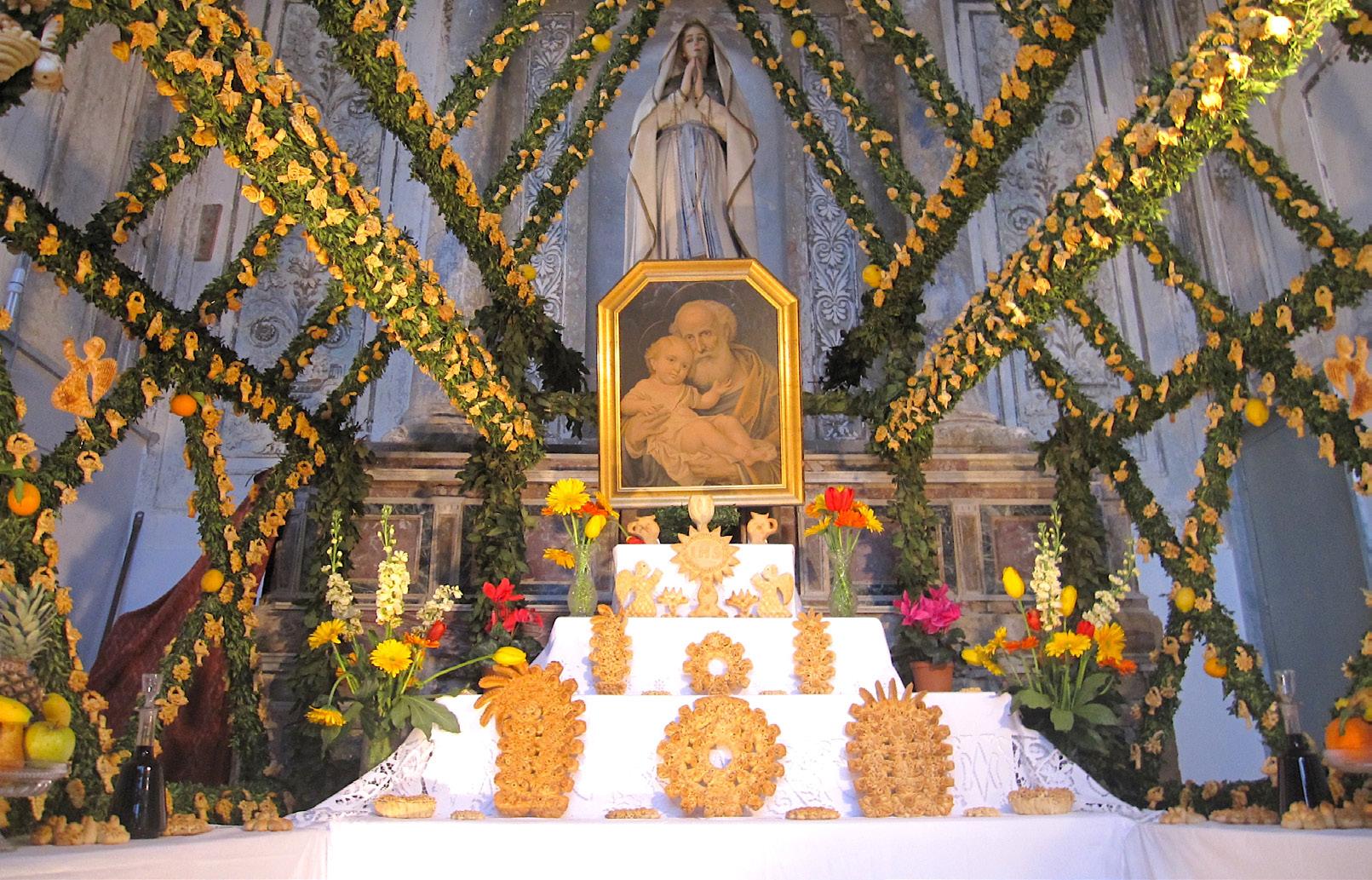
3 minute read
Votive Breads Show Honor to St. Joseph in Salemi

Each year, altars decorated with bread and food are prepared in Salemi on March 19th to celebrate St. Joseph’s Feast Day. During this century-old tradition devotees set up those altars to fulfill a promise or give thanks for a favor granted. The festival also features cultural events, tours to the local museums and arts & crafts.
Salemi Tourist Office
By Dr. Alberto Lunetta, NAS Sigonella Public Affairs
Advertisement
Shopping for bread at bakeries or supermarkets is one of the most normal things we do today. One can choose from a variety of different breads, therefore, it might be difficult to understand its importance as the most traditional of staple foods.
“U pani non si ietta mai!” (Bread should never be thrown away). This is an expression heard a thousand times in Italian households by parents and grandparents. In rural Sicily, at the beginning of the 20th century, pane or bread was almost considered holy. Peasants worked hard in the fields and bread was their “reward.”
Bread as “holy food” was linked to the cult of San Giuseppe (St. Joseph) that has been celebrated for years throughout the region. Today, these rituals are still kept alive. One of the most fascinating traditions is the one in Salemi.
Salemi is a town located in the province of Trapani where devotion to San Giuseppe takes the form of altars decorated with local food that is symbolically offered to the poor and needy.
According to tradition, the number of items on the altar can’t be less than 19 or more than 101. In Salemi, elaborate bread altars are an important part of the public celebration. Since the 19th century the Cene di San Giuseppe (St. Joseph Dinners) also called the “St. Joseph’s Table” are prepared for the festival held on March 19. These special “dinners,” which actually take place at midday, are held at several venues throughout the city’s historic center and consist of a banquet offered by devotees to three children (in the past they came only from needy families) referred to as Santi (saints) or Virgineddi (virgins), who symbolize the Holy Family.
The preparation of the dinner begins eight days before the festival. It includes “101courses,” all of them meatless, because of Lenten obligations. Spaghetti mixed with olive oil, breadcrumbs, sugar, cinnamon and parsley, along with different kinds of cakes and vegetarian omelets are among the food choices offered to the young guests. The devotee, who prepares the meal, is someone who shows gratitude and reverence to St. Joseph, the saint of Providence and the patron and protector of the family and of the poor, or to invoke the saint’s help for healing from a sickness.
Next to the tables where the dinner is held, is another ritual of celebration, the building of a chapel-like structure, made of wood or iron. The chapel contains a three-tiered altar that is surrounded by an ornamental roof-like projection framed in myrtle and laurel, and hung with lemons, oranges, and hundreds of small, ornately shaped breads.
The altars contain candles, crosses and other religious objects, flowers, select foods, a jar of wine and three large, more intricately ornate breads (Cudduri) intended for the kids. These breads, which represent the Holy Family, are set on the front steps while a large framed print of St. Joseph or of the Holy Family is placed at the center of the chapel.
During the banquet, believers recite monologues and prayers named Parti in honor of Saint Joseph. While eating, the three kids offer food to the visitors. At the end of the meal, the landlords offer visitors some of the food including some “blessed” bread.
This popular tradition has been kept alive for a very long time and every year it attracts thousands of tourists. English speaking guides will be available to accompany tourists to the festival events that also include art and exhibitions and antique fairs.
Salemi is located on a hill in the heart of the Trapani province. It can be easily reached through the Catania-Palermo highway. Once in Palermo take the Palermo-Mazara del Vallo highway and exit Salemi.
For more information visit the town of Salemi tourist information Facebook page: https://www.facebook.com/ pro.salemi/







